Culture
A talk with paleontologist Jack Horner
A likeable, optimistic & fascinating man, dedicated to his work
People of all ages are attracted to dinosaurs even if they have been extinct for more than 65 Millions years.
The best man in the field to talk about dinosaurs is Jack Horner. Who has not heard about Jack Horner, the most known paleontologist?
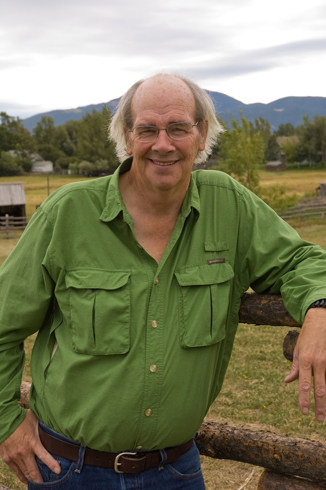
Jack Horner Portrait – copyright MOR, Bozeman MT
Many newspapers, magazines and TV journalists around the world such as CNN, CBS, Time Magazine, the Guardian & the Montana Magazine all interviewed him once.
I had the chance to meet him between Christmas and New Year at the Museum of the Rockies (MOR) in Bozeman, Montana, where he works. We talked about his great love and passion for dinosaurs, old and new projects (Jurassic Park, Terra Nova and the Chickenosaurus). When we met he had just found a new dinosaur bone in Montana, an Orodromeus.
We sat down at his desk in a large room office at the end of a corridor, that he shares with many others. Then, on the way to the Exhibition Hall of the museum, we stopped at Jack’s research lab, full of tools, microscopes, molds, feet, skulls, teeth and femurs of dinosaurs.
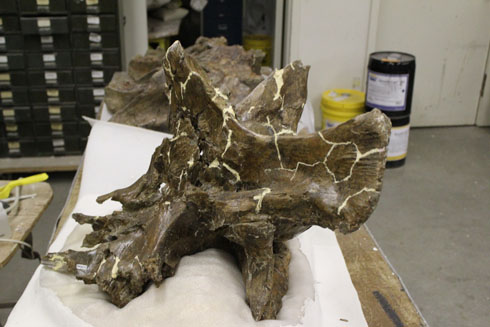
Dinosaur bone in Jack Horner’s research lab in Bozeman, MT
Unfortunately the staff and students were all on holidays, he explained. Otherwise I would have been welcomed to see what they were working on.
But, I did have the opportunity to touch Jack’s first dino bone, which he pulled down carefully from his desk shelf in his office.
Who is he?
The North American paleontologist, Jack Horner, was born in the small city of Shelby in Northern Montana. His father was a geologist and dug gravel and sand.
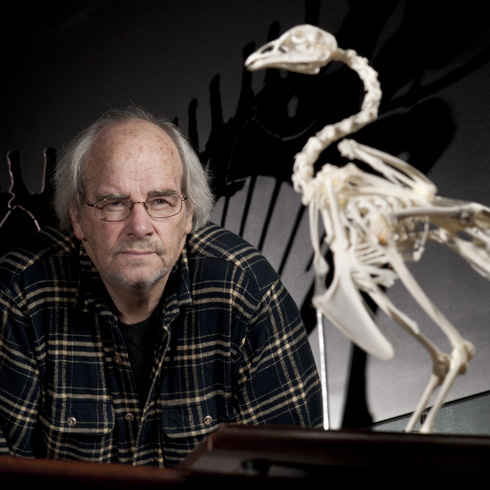
Jack Horner – Photo MSU/Kelly Gorham
In June, Jack will turn sixty-six. He spent all his life digging for dinosaurs and most of it researching about it. He found his first eggs at Egg Mountain in Montana. With others he came to the conclusion that dinosaurs were social creatures, who lived in colonies, took care of their youth, fed their babies and always moved in big herds.
This year, he will celebrate his thirtieth year working at Museum of the Rockies as the curator. The museum, founded in 1957 by Caroline McGill, has the biggest collection of dinosaurs in the USA. Many people come to the museum to see the amazing dinosaurs.
It is the Director of the museum, Mike Hager who hired him in 1982.
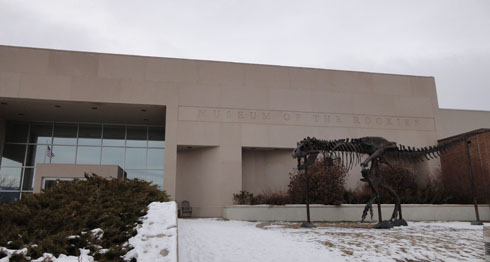
Museum of the Rockies from the outside in Bozeman
I had visited the Museum of the Rockies in 1991-92, when I was a student at MSU. The place has changed a lot since I came to study at MSU, Jack assured me. He was right! He talked about the campus, which was built in the 1950’s. Then, it was enlarged in the 1960’s and another building was added in the 1980’s. Today Jack Horner has a staff of 6 graduate students.
Jack teaches at MSU where he is the Regent Professor since 2002. Montana State University is probably the best place in the world to study paleontology. At MSU there are 200 undergraduate students studying for an Earth & Science degree. They can learn about geology, biology, geography, snow science and paleontology. The Master and PhD program has 50 graduate students.
In the world, MSU offers the largest field research program. Students takes part on various field summer trips. In 2009-10, there was one called the Hell Creek Project in Garfield County in Montana. Paleontologists from Montana and some graduate students just found some egg clutches in China in December 2011. A few egg shells have to be analyzed at the MSU lab.
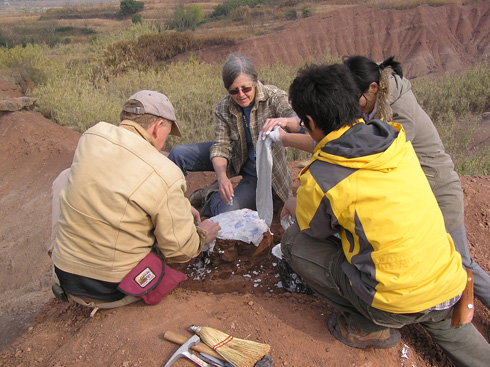
Talking to Jack, you see how much pride he has in his students. He said they are the best in the world. When I asked if it was hard to find a job in his field, he replied sure of himself, “If you really good at what you are doing, you can always find a job”.
And he can be proud of himself too with what he accomplished, knowing all the barriers he had to face since he was a student. He had trouble reading and writing due to his dyslexia. But Jack shows how much self determination matters to accomplish a dream.
Over the years Jack Horner wrote many books and research papers such as his book published in 2009 “How to build a Dinosaur”. Now the Chickenosaurus project is going to happen. He found the “adventurous” post-graduate student he was looking for when he went to San Francisco in September 2011. He was hoping to find someone “out of the extraordinary, an evolutionary developmental biologist who just want to play to discover things”. He told a journalist there that they had money for about 5 to 6 years to find the genes and work on the dino chicken.
Let see what the man who is known to have admitted during the last TED conference in Long Beach, California “I would like to have a pet dinosaur” had to say:
Vivamost: At what age did your interest in dinosaurs start and how?
Jack Horner: “I was born this way, I don’t remember a particular time.”
Do you think your interest would have been as high if you had been raised in a different place?
“It would have happened no matter where I was. Remember, I was born this way!”
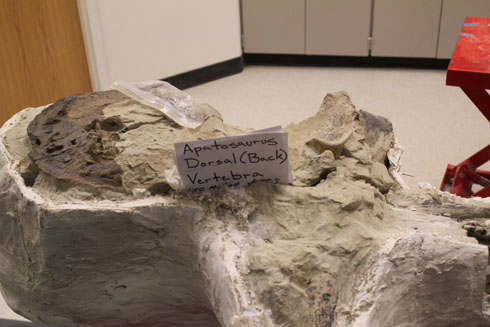
Apatosaurus, MOR, Bozeman
How did you feel when you found your first dinosaur bone?
“Oh, I was very excited, I was 8 years old. It was on some land my father used to own, 50 miles away from where I was born.”
Have you done some digs on other continents like Australia or Antarctica?
“I have been in China, Argentina, Mongolia, Romania, France, Spain and Tanzania. Sometimes I go for one month and in the summer time for 3 months. I never take away bones out of a country. I collect them for them. What I want is the data.”
How many dinosaurs have you found so far?
“I found thousands and I named 12 species.”
Are all the bones you found in the Museum of the Rockies?
“Some are in the University of Yale when at worked at Princeton. Some are the University of Montana in Missoula. Here we have the largest collection in the world.”
When was the last one you found in Montana? Was it a big or a small bone?
“It was in October this year (2011). It was about this size, showing me something about 70 cm in height. I named it Orodromeus*.”
How many are still out there in Montana?
“Thousands. Yes, there are still some; otherwise I would not be here.”
What is the minimum time it takes to dig one dinosaur?
“It depends on the size and if the rock is hard of soft. The last one in October took 2 1/2 days. It is easy to dig dinosaurs out. What is important is what you do with it (insisting).”
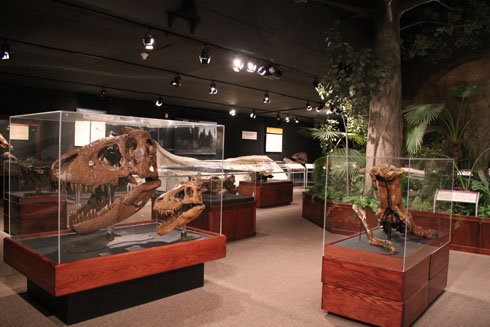
Museum of the Rockies, in the exhibition dinosaurs hall
What percentage of dinosaur species are known? Is 10% correct?
“Yes, 10 % is maybe right, it is hard to say.”
Is there still much to be learned about dinosaurs today or is the Dino Renaissance over?
“I think we answered most of the big questions like we know they were warm blooded and social. Lots of details are left to be answered.”
Do you ever get frustrated about studying extinct animals?
“No”, he said with no hesitation. “I get frustrated about living animals.”
Is studying paleontology a field which many people study in general?
“We have lots of student here at MSU, we have very very good ones, he said proudly.”
Is it relatively easy to find a job as a paleontologist?
“If you are really good at what you are doing, you can always find a job. We have the best students in the world. It depends what you want to do. With their degree they can work in biology, human anatomy, can teach or be museum curators.”
Was the character of Dr. Alan Grant in Jurassic Park* a portrait of you?
“A little” he said, “not so sure. He looked perplex.”
Did you like working on the Jurassic Park project? Would you do it again?
“Oh yeah. It was filmed in Hollywood and I had to go back and forth. Now I am working for Hollywood again once a week via Skype. It is Terra Nova*, a program you can see on FOX.
Would you love to have a dinosaur park? You would not fear one would escape?
“No I don’t need one. I would rather have a museum.”
Do you think the T.Rex was as awful as it looked?
It looked scary but did not run very fast… and if you are scary looking you don’t really need to run fast.”
You would not be scared?
“No.”
How would you react if one would be in front of you today?
“I would climb a tree.”
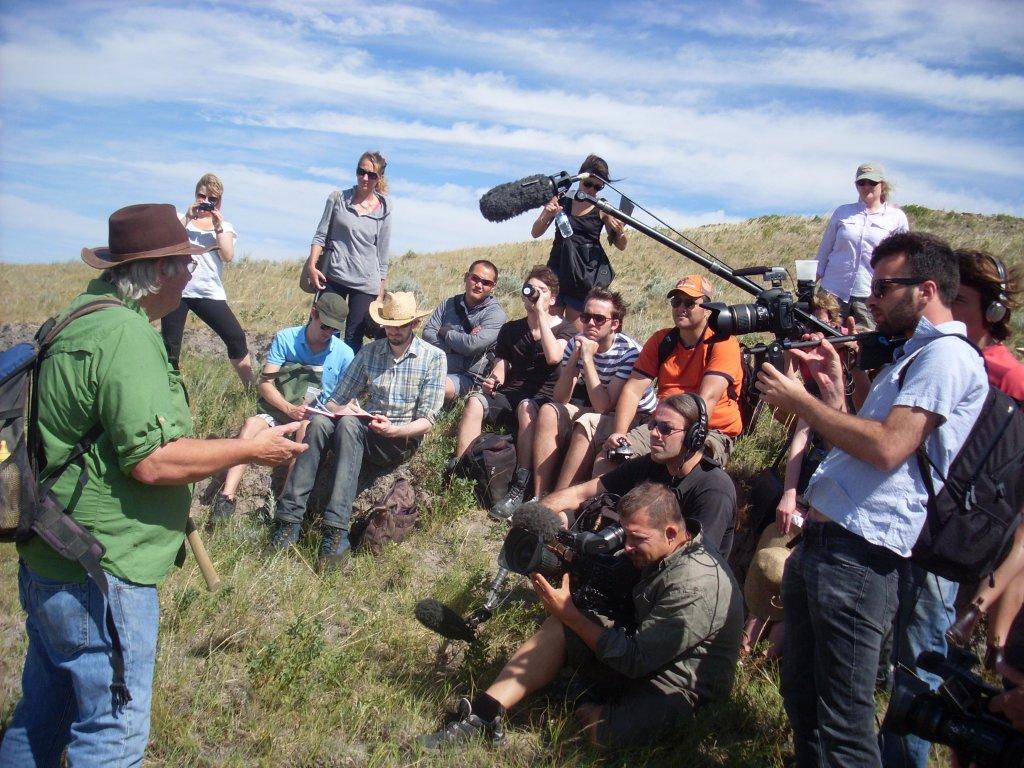
SL382433 JACK Horner in the field – copyright MOR
How is your Chickenosaurus project going?
“It is coming along. A post-graduate from France from the University of Paris 6th arrondissement will come and look for the genes. She will stay 4 to 5 years. Once she gets here it will go pretty quickly.”
Are you planning to retire when you succeed?
“No, then I will have to find something to do. I will die this way.”
How do you spend your days? What do you like the most?
“I mostly do research. I travel a lot. What I like the best is finding dinosaur bones.”
What do you really want to accomplish in 2012?
“I will work on some bone histology papers and other papers. I will have some field trips in Montana in the summer and I hope to have a dig in Trieste, Northern Italy in June. The Italians would run the project and I would finance it.”
After the interview, Jack signed for my son one of his books published in 2007, a children’s book called “Digging up dinosaurs with Jack Horner”.
To know more how to study paleontology at MSU, please click here.
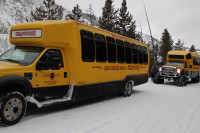
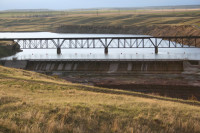
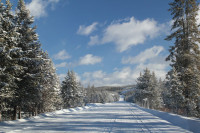


This is a great article on Jack.
I stumbled onto your book “How to Build a Dinosaur”. I will never give a chicken the cold shoulder again. Merry Christmas.